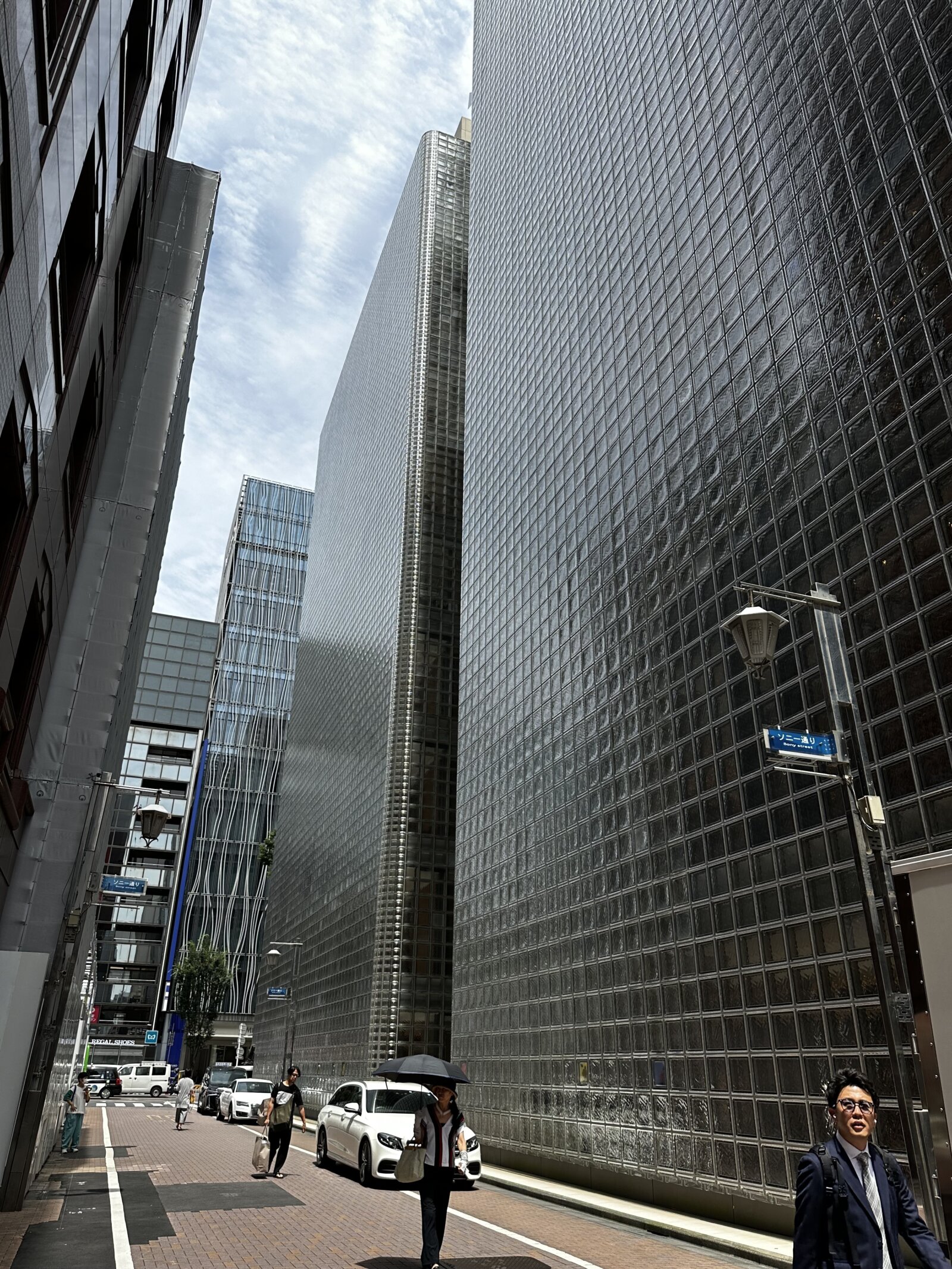blog
Tokyo - extraordinary expression of modernity
Blog — 17 Jul 2023
In 1998 The Royal Academy (RA) launched an exhibition in Tokyo to celebrate “British Architecture and its European Context”. We worked with Peter Murray, then of Wordsearch, and MaryAnne Stevens of the RA to develop a design that could travel from Tokyo to Hiroshima, Beijing, Guangzhou and finally Hong Kong. The exhibition was a snapshot of British architecture at the turn of the century. Models were to take centre stage, and we developed a series of flat pack plinths that tilted the models off axis to enhance the viewers understanding of the three dimensional and spatial qualities of the designs. These plinths were enveloped by a sinuous modular plywood wall that snaked through the spaces with supporting printed project sheets. We worked up the detailed design with Nick Delo who also delivered the timber elements from his London workshop. Today Nick is a director at Stiff+Trevillion.

Whilst in retrospect the exhibition is notable for featured projects that we never saw, Liebeskind’s V&A extension, Fosters Millennium Tower in the City, and Arup’s Paternoster Square, it is far more impressive that most of them have been delivered. The Eden Project, The Millennium Dome, The Reichstag, The Jubilee line, Terminal 5, Tate Modern, Wembley, The Museum of Scotland and the Neues Museum Berlin for example. Some, such as Nigel Coates Pop Music Centre in Sheffield, have been and gone.
The forward to the catalogue was written by Bob Maxwell, and his conclusion still resonates today:
“modern architecture is no longer restricted by urban planning dogma, but rather (it) can become a vehicle of aesthetic expression and for urban regeneration”
Being in back Tokyo for the first time since then reminded me of those happy times. I was there to set up another exhibition, the inaugural Tokyo Gendai Art Fair, a collection of ninety global art galleries gathered at the Pacifico Exhibition Halls in Yokohama, 40 km and 50 minutes or so from the centre of Tokyo. Yokohama is a major port with a population of four million, a city in its own right, connected to the capital by a seamless sprawl of industrial and suburban development.
Tokyo is a mega city and with a population of 38 million it is the largest in the world. Like London it is very much a collection of self sustaining centres, connected by the most complex transport system I have ever encountered. (it is also one of the most efficient, cleanest and safe.).

Whist Japanese culture combines tradition with modernity, they are not precious about the past, and replacement and redevelopment are enshrined in the belief system. One of my favourite spots in Ark Hills was the Okura Hotel, a 1960’s classic designed by Yoshiro Taniguchi. It was deeply saddening to learn that it was to be demolished and rebuilt as part of the Olympic restructuring, in fact a roster of international architects publicly pleaded for its survival, to no avail. It has been rebuilt on the same site, much, larger, and with a meticulous replica of the principal lobby spaces. Taniguchi’s son, also an architect, was retained to deliver this, and it successfully achieves the serenity, texture and light of the original.

The Japanese are not shy when it comes to heritage, in 1968 Frank Lloyd Wright’s Imperial Hotel was demolished, part dismantled and moved to a site near Nagoya. The mediocre replacement does contain a replica of the Old Imperial Bar, which reuses some of Frank Lloyd Wrights furniture and detail.

Whilst the majority of the commercial architecture in Tokyo is unremarkable, typical late 20th century glass modern, it is perhaps not surprising that in a consumer economy it is left to the fashion retailers to inject personality and joy into the public realm with their flagship stores. Notably Hermes (Renzo Piano), Prada (Herzog de Meuron) and Louis Vuitton (Jun Aoki).


The strides that western town planners, developers and architects have made in recent years to address biodiversity and the carbon issue, feel someway off in Tokyo, but I am sure it will become an imperative in an insular country with a massive demographic problem that will inevitably take its toll on economic growth. Perhaps the Terrada Art Complex is a sign of things to come, a series of industrial buildings converted for gallery and arts uses on the river at Shinagawa.

There is so much to admire in Tokyo, it is an extraordinary expression of modernity, but where it goes from here will be interesting to see.